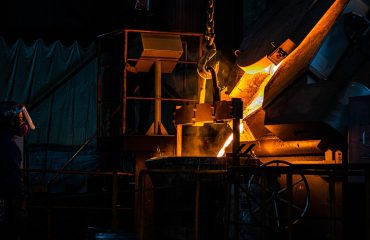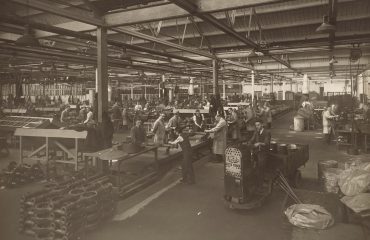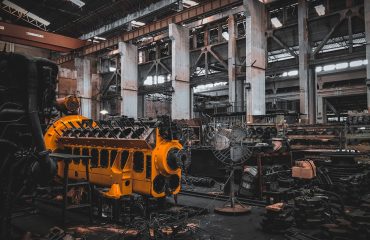Steel bridges, monuments to engineering prowess, grace our landscapes, connecting communities and facilitating trade. Designing these structures is a complex undertaking, requiring a deep understanding of structural mechanics, material science, and construction techniques. This comprehensive guide delves into the intricacies of steel bridge design, providing insights into the key considerations and processes involved.
1. Understanding Loads and Forces: The Foundation of Steel Bridge Design
Before even sketching a single line, engineers must meticulously analyze the anticipated loads a steel bridge will endure. This involves considering a multitude of factors, including:
- Dead Loads: The weight of the bridge itself, including the steel structure, decking, and any permanent fixtures.
- Live Loads: The weight of vehicles, pedestrians, and other moving elements. Design standards dictate specific live load models based on the bridge’s location and intended use (e.g., highway bridges have different load requirements than pedestrian bridges).
- Environmental Loads: Wind, snow, ice, and seismic activity all exert significant forces on a bridge. These loads must be carefully assessed based on the bridge’s geographic location and the prevailing climatic conditions.
- Temperature Loads: Steel expands and contracts with temperature fluctuations, creating additional stresses within the structure. These thermal effects must be accounted for in the design.
- Yield Strength: The stress at which the steel begins to deform permanently.
- Tensile Strength: The maximum stress the steel can withstand before failure.
- Ductility: The ability of the steel to deform plastically before fracturing, which provides resilience to unexpected loads.
- Weldability: The ease with which the steel can be welded, crucial for joining various components of the bridge structure.
- Girder Bridges: Utilizing steel girders (beams) to support the deck.
- Truss Bridges: Employing a network of interconnected members to distribute loads efficiently.
- Arch Bridges: Utilizing the inherent strength of an arch to transfer loads to the abutments.
- Suspension Bridges: Hanging the deck from cables supported by towers.
- Cantilever Bridges: Extending the bridge deck from central supports.
- Connections: The design of connections (bolts, welds, rivets) is crucial for transferring loads effectively and ensuring the overall stability of the structure.
- Corrosion Protection: Steel is susceptible to corrosion, necessitating the implementation of protective measures such as painting, galvanizing, or other specialized coatings.
- Fabrication Processes: The manufacturing process, including cutting, bending, welding, and assembling the steel components, must adhere to strict quality control standards.
- Visual Inspections: Checking for signs of damage, corrosion, or deterioration.
- Non-destructive Testing (NDT): Using techniques like ultrasonic testing to assess the internal condition of the steel members.
- Structural Health Monitoring (SHM): Employing sensors to monitor the bridge’s behavior under various loads and environmental conditions.
Accurate load calculations are crucial. Sophisticated software programs, employing finite element analysis (FEA), are used to simulate the behavior of the bridge under various load combinations, ensuring its structural integrity and safety.
2. Material Selection: Choosing the Right Steel for the Job
The selection of appropriate steel grades is paramount. Different steel alloys possess varying strength, ductility, and weldability characteristics. Engineers must carefully consider the specific requirements of the project when choosing the optimal steel grade. Factors to consider include:
High-strength low-alloy (HSLA) steels are frequently used in bridge construction due to their excellent strength-to-weight ratio, reducing the overall weight of the structure and minimizing material costs.
3. Design Concepts and Structural Systems: Shaping the Steel Skeleton
The overall design concept depends heavily on the bridge’s span length, traffic volume, and surrounding environment. Common structural systems include:
The choice of structural system significantly impacts the overall design, material requirements, and construction process. Sophisticated computer-aided design (CAD) software is essential for creating detailed structural models and analyzing their behavior under various conditions.
4. Detailing and Fabrication: Transforming Designs into Reality
Once the structural design is finalized, detailed drawings are prepared for fabrication. These drawings specify the dimensions, connections, and material requirements for each component of the bridge. Accurate detailing is critical to ensure proper assembly and functionality. Considerations include:
Fabrication often involves specialized workshops equipped with advanced machinery to ensure the precision and accuracy required for large-scale steel bridge components.
5. Construction and Monitoring: Bringing the Bridge to Life
Construction of a steel bridge is a complex process involving heavy machinery, skilled labor, and meticulous planning. Safety is paramount throughout the construction phase. The erection of steel components often involves specialized lifting equipment and techniques. Post-construction monitoring is equally vital. Regular inspections and maintenance are essential to ensure the long-term performance and safety of the bridge. This might include:
Continuous monitoring allows for early detection of potential problems, enabling timely intervention and preventing catastrophic failures.
Designing steel bridges is a challenging yet rewarding endeavor. It requires a multidisciplinary approach, combining engineering expertise, advanced software tools, and meticulous attention to detail. By understanding the principles outlined above, engineers can contribute to the creation of safe, efficient, and aesthetically pleasing steel bridges that serve communities for generations to come.




